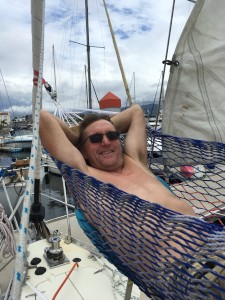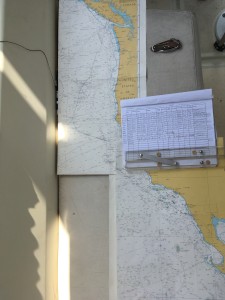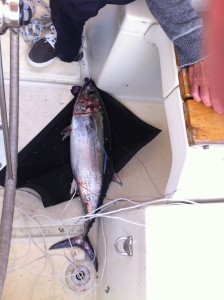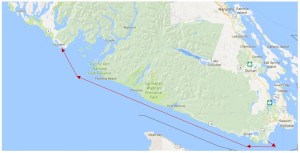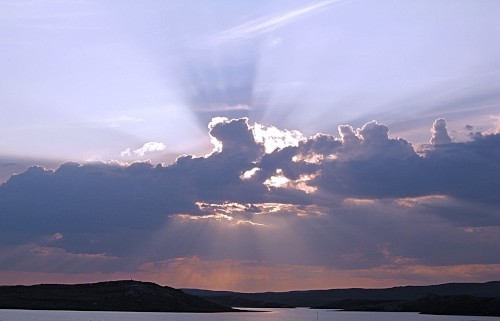Wild Blue Yonder
| Vessel Name: | Shala |
| Vessel Make/Model: | Sceptre 41 |
| Hailing Port: | Nanaimo, B.C. |
| Crew: | Skipper: Harry Nichols Mates: Moe Graham, Laurie Graham |
| About: | Moe and Laurie Graham will be accompanying the boat on the first leg to mexico, departing aug 2017. both are seasoned sailors and wonderful folks. |
| Extra: |
24 September 2017
13 September 2017 | ensenada, mexico
07 September 2017
07 September 2017 | Ensenada, Mexico
23 August 2017 | off the coast of oregon
15 August 2017
13 August 2017 | ukee
10 August 2017 | uclulet
07 August 2017 | Nanaimo, BC
06 August 2017 | currently in the gulf islands on the shakedown cruise
28 July 2017 | Nanaimo, BC
Recent Blog Posts
13 September 2017 | ensenada, mexico
sittin at the dock of the bay
so i sit in paradise…a week has gone by…more…i cant remember how long ive been here. my crew left me today and suddenly the “irma” of activitiy is over. the first few days were surreal. i awoke the first morning and had to pinch myself. here i am in paradise…somehow ive managed to get my [...]
Footnotes, ponderings and lessons learned
24 September 2017
Post by Moe
Laurie, Harry and I just completed a major offshore voyage down to Mexico on the sailing vessel Shala. A voyage of 1400+ miles. It was not exactly a crossing, technically it was a coastal cruise as we started and ended in the Eastern Pacific Ocean and stayed well within the Northern Hemisphere. It was more of a latitude adjustment if you will. From the second hour of the first day to the second to last hour of the last day we saw no land at all, save for a ghostly silhouette of Santa Catalina Island, mostly obscured by fog. We may as well have crossed an ocean by the way it felt.
LESSONS LEARNED
1. There is no such thing as a predictable ocean voyage. No two trips are alike and all of my previous experience at sea commercial fishing did not adequately prepare me for a sailing voyage. The differences were profound. In fact, “experience” can lead you astray, it did to me. My crewmates, who had no experience, were probably better off as they had no previous database to draw from. As an example, the majority of my sea days (1000+) were spent north of the Columbia River and south of Alaska and it is a very different ocean. I kept expecting and hoping that the sea state would settle out and become further spaced apart from 5 – 8 seconds to a more comfortable 10-15 seconds, but it never did. It stayed as a miserable, short, choppy, messy sea regardless of what the wind did.
2. Expectations – The notion of a simple b-line course from Ucluelet south and west until well clear of Cape Mendocino, then hanging a left (or gybing to starboard) in hindsight was ridiculous. An ocean is far too variable, predicted winds are far too unpredictable, every day was a course correction of one kind or another. It became less and less important to adhere to our planned course and more necessary to strive for as much comfort as we could, even if it took us miles from the intended course.
3. Weather – For 20 or so years I have fancied myself as a weather expert, after all, I’m a windsurfer and windsurfers know the weather. We all just go online to EC Canada or NOAA, download some satellite imagery, have a look at some Doppler radar, and scan the animated data from Windyty or BigWaveDave.ca and BAM, instant weather guru. The only problem at sea is the absence of high-speed cable internet. Of course, I knew that. But like most of us, I was addicted to internet forecasting. My advice to newbie voyagers is to unplug the cable at least one month prior to departure and get used to using any and all alternate forecasting tools, then only go online after you have made your own forecast to your specific region to verify your prediction. No cheating! Trust me, it is a very hard transition to make all at once.
4. Boats and crew – Boats are tough, crews are not. I would suggest the toughest crew is not equal to the weakest boat. In fact, thousands of boats have survived long after their crews have given up on the boat and abandoned ship. Indeed, some ships have even gone on to complete the intended voyage without the crew. I’m not going to suggest that we don’t worry about keeping on top of the ongoing maintenance and repairs, far from it. I will say that working the crew past the limit of fatigue just to keep the boat sailing on course is a good way to ruin the trip and to start making bad decisions. If your crew is exhausted, stop sailing, heave-to or, at the minimum, douse all sail, secure the hatch and go to bed. It is highly unlikely that any harm will come to the boat or the crew. So keep to the watch system you have agreed to. When off watch, go to bed! Even if sleep seems impossible, a laydown rest is better than nothing. My shipmates were not as experienced as I and they both felt they needed to take care of chores at the end of their watches. I disagree with that thinking. Their tasks were of high priority to Harry and Laurie but lead them both to the point of exhaustion. On a few occasions, I was taking some of their watches to get them some rest without their request. I was able to have enough reserve energy to do that and more because I was the most diligent sleeper on board. In fact, during a lightning storm we sailed through, I said good night, I’m going to bed. They both looked at me like I had lost my mind, but what can I do about lightening? So I slept and we sailed on.
5. Meals – Laurie was adamant that we pre-cook and package enough frozen food for 15 meals. Being a seasoned boat cook, I was sceptical. She was brilliant! The point is, there is nothing like a fantastic meal to keep the crew happy. Canned beans and peanut butter sandwiches will not suffice. Eat well, be happy. Dress warm, change clothing often, you won’t be able to wash your clothes, but you can flip the pile.
6. Computers – There is no going back to the pure age of sail. WE are an electronic species and that is that. Most modern boats have many computers on board and all are necessary for the function of the boat. On this trip we had one HP laptop, one Mac Air laptop, one iPad and one Samsung tablet and two iPhones. The HP was dedicated to downloading the weather fax files. Downloading weather faxes neither begins nor ends, it simply is. Its source was an HF sideband radio. Because of the download speed (slow), it’s all we could ask of it. It often froze up, or lost signal, or both, making it necessary to start again because an incomplete fax is useless. We had to find a station, then a frequency and wait and wait and wait. By the time we had all the files downloaded they were often too old to be reliable because conditions change by the hour, sometimes dramatically. To give an example, in the space of four hours the fax read first – there is no reported cyclonic activity in the eastern Pacific. Then – there is a tropical cyclone and hurricane watch in the eastern Pacific. Big change! The former was supposed to be valid for 72 hours so we kept up with the downloading. The Mac Air laptop was dedicated to emails both sending and receiving. The problem with that is that both computers shared the same modem. Emails were for personal communication, so not a high priority. Next was the iPad. This was dedicated to the Iridium GO system, essentially a sat phone that was used to download grib files and was sold as a hotspot that could handle gribs and emails and text messaging for up to 5 devices. Its performance was less than we expected. The problem with that is that we had oversold our ability to communicate with family and friends and to be able to do a regular blog post. The result was causing us all much anxiety as we were receiving texts from concerned people asking if we were okay. Unfortunately, we could not respond. Lessons learned – don’t worry about social media when offshore. Put away the iPhone, tell your friends you’ll be in touch when you can and concentrate on sailing the boat.
7. Marine equipment – Caveat Emptor! Just because it says marine does not mean the item is suitable to be used on a boat, particularly an offshore boat. Case in point – Harry purchased a brand new marine range/oven from a reputable marine chandler. It came with the associated gimbaling hardware, including mounting brackets. The brackets were made of pressed 1/32” stainless steel. They were mounted on the bulkheads on each side of the space for the oven to drop down into the brackets. The installation kit also included a flexible propane line with enough slack to allow the unit to gimbal up to 90 degrees with adequate clearance. The oven/range was factory fitted with a ½” stainless dowel on each side with a flange so that the unit would drop down into the brackets with a locking tab on each side. The install was done with a high degree of craftsmanship and I inspected it myself. It also came with a gimbal lock mechanism and the unit never had a chance to gimbal, other than during dockside testing prior to going offshore. The day we left port was the first time the lock was taken off. A mere six days into the trip the stove began to hang up during its swing from side to side. We found this odd, to say the least. Harry blamed himself at first for a poor installation. We were puzzled. Then we noticed black debris on each side of the oven that looked like pencil graphite. We had to constantly unstick the stove to assist it to swing. Not until we made port did we discover the cause – the constant gimballing over 12 days had elongated the stainless brackets by ½” and, amazingly, had sawn almost halfway through the stainless dowels, thereby dropping the stove ¾” from its original mounted position and badly chafing the propane line. So, in under two weeks it had nearly cut itself free from the bulkhead. This is marine hardware? If it were me, I would be freaking out on the manufacturer, totally unacceptable junk. We ended up repairing the cuts in the dowel with JBWeld, sanded smooth, then we made a pair of teak block/brackets to support the entire surface of the dowels. As of yet, it has not been sea tested.
8. Bilge pump float switches – It’s funny how the most popular brand of bilge pumps have the most problematic mercury float switches. I’m not naming names, but I have gone through three of these on my boat in 8 years. Same problems, sticky switch mechanisms, failure to shut off after the level drops and consequently draining the battery, or worse, the float switch failing to lift up once fully submerged. Not like it’s important or anything. So I just keep buying more. I had assumed it was just my bad luck to purchase defective parts. When the main bilge float switch failed to shut off the pump on Shala, I asked Harry how old the part was. He told me it was not quite one year old and, worse, it’s a replacement to a replacement. So what do we do? I honestly don’t know. I suggest finding the best parts available and triple-tested at the dock, but it is a disturbing problem.
9. Sails and sailing – Furling headsails and main. Some may disagree with main in-mast furling due to the off chance it could jam once fully deployed. I cannot imagine a more terrifying scenario than a runaway mainsail in big wind with no way to douse it. But to date, Harry has never had any trouble with his system during his eight years of sailing Shala. From personal experience on this trip, the ability to micro adjust the mainsail from the cockpit to the exact size needed for the conditions effortlessly, makes reefing super easy and not at all stressful. Reaching poles are essential! Perfect your own system, make it work as easily as you can make it. Don’t leave shore without them. Sail fast, sail appropriate to wind and sea state, anything over 5 knots is good sailing. It’s not a race. Some days you will be fast and you will be making excellent time, other times you will be cursing the 4.2 knots showing on your GPS. Relax, you are still getting to where you want to be.
10. Sextant – We had high hopes we would be taking sun sights every day at noon but the sextant never got out of its case. Rather than using celestial navigation to plot a daily position, we could barely remember to get an accurate fix on the chart taken from the GPS at the same time every day. We are not making excuses, we just did not. GPS is just too accurate, too convenient and too easy.
11. Motoring – Every single yacht on the water today is a motor sailor. Don’t think otherwise. So motoring or motor sailing during lulls in the wind is not admission of failure. IN fact, it is prudent sailing strategy provided you reserve 1/3 of your fuel for making landfall. The only purists on the water are the boats with no engines at all (they are few). You have an engine for a reason, you it if you need it.
I’m not a professional, world-class navigator, I’m just a regular working guy who likes to sail. I’m sharing my insights with anyone who thinks they can use it.
Laurie, Harry and I just completed a major offshore voyage down to Mexico on the sailing vessel Shala. A voyage of 1400+ miles. It was not exactly a crossing, technically it was a coastal cruise as we started and ended in the Eastern Pacific Ocean and stayed well within the Northern Hemisphere. It was more of a latitude adjustment if you will. From the second hour of the first day to the second to last hour of the last day we saw no land at all, save for a ghostly silhouette of Santa Catalina Island, mostly obscured by fog. We may as well have crossed an ocean by the way it felt.
LESSONS LEARNED
1. There is no such thing as a predictable ocean voyage. No two trips are alike and all of my previous experience at sea commercial fishing did not adequately prepare me for a sailing voyage. The differences were profound. In fact, “experience” can lead you astray, it did to me. My crewmates, who had no experience, were probably better off as they had no previous database to draw from. As an example, the majority of my sea days (1000+) were spent north of the Columbia River and south of Alaska and it is a very different ocean. I kept expecting and hoping that the sea state would settle out and become further spaced apart from 5 – 8 seconds to a more comfortable 10-15 seconds, but it never did. It stayed as a miserable, short, choppy, messy sea regardless of what the wind did.
2. Expectations – The notion of a simple b-line course from Ucluelet south and west until well clear of Cape Mendocino, then hanging a left (or gybing to starboard) in hindsight was ridiculous. An ocean is far too variable, predicted winds are far too unpredictable, every day was a course correction of one kind or another. It became less and less important to adhere to our planned course and more necessary to strive for as much comfort as we could, even if it took us miles from the intended course.
3. Weather – For 20 or so years I have fancied myself as a weather expert, after all, I’m a windsurfer and windsurfers know the weather. We all just go online to EC Canada or NOAA, download some satellite imagery, have a look at some Doppler radar, and scan the animated data from Windyty or BigWaveDave.ca and BAM, instant weather guru. The only problem at sea is the absence of high-speed cable internet. Of course, I knew that. But like most of us, I was addicted to internet forecasting. My advice to newbie voyagers is to unplug the cable at least one month prior to departure and get used to using any and all alternate forecasting tools, then only go online after you have made your own forecast to your specific region to verify your prediction. No cheating! Trust me, it is a very hard transition to make all at once.
4. Boats and crew – Boats are tough, crews are not. I would suggest the toughest crew is not equal to the weakest boat. In fact, thousands of boats have survived long after their crews have given up on the boat and abandoned ship. Indeed, some ships have even gone on to complete the intended voyage without the crew. I’m not going to suggest that we don’t worry about keeping on top of the ongoing maintenance and repairs, far from it. I will say that working the crew past the limit of fatigue just to keep the boat sailing on course is a good way to ruin the trip and to start making bad decisions. If your crew is exhausted, stop sailing, heave-to or, at the minimum, douse all sail, secure the hatch and go to bed. It is highly unlikely that any harm will come to the boat or the crew. So keep to the watch system you have agreed to. When off watch, go to bed! Even if sleep seems impossible, a laydown rest is better than nothing. My shipmates were not as experienced as I and they both felt they needed to take care of chores at the end of their watches. I disagree with that thinking. Their tasks were of high priority to Harry and Laurie but lead them both to the point of exhaustion. On a few occasions, I was taking some of their watches to get them some rest without their request. I was able to have enough reserve energy to do that and more because I was the most diligent sleeper on board. In fact, during a lightning storm we sailed through, I said good night, I’m going to bed. They both looked at me like I had lost my mind, but what can I do about lightening? So I slept and we sailed on.
5. Meals – Laurie was adamant that we pre-cook and package enough frozen food for 15 meals. Being a seasoned boat cook, I was sceptical. She was brilliant! The point is, there is nothing like a fantastic meal to keep the crew happy. Canned beans and peanut butter sandwiches will not suffice. Eat well, be happy. Dress warm, change clothing often, you won’t be able to wash your clothes, but you can flip the pile.
6. Computers – There is no going back to the pure age of sail. WE are an electronic species and that is that. Most modern boats have many computers on board and all are necessary for the function of the boat. On this trip we had one HP laptop, one Mac Air laptop, one iPad and one Samsung tablet and two iPhones. The HP was dedicated to downloading the weather fax files. Downloading weather faxes neither begins nor ends, it simply is. Its source was an HF sideband radio. Because of the download speed (slow), it’s all we could ask of it. It often froze up, or lost signal, or both, making it necessary to start again because an incomplete fax is useless. We had to find a station, then a frequency and wait and wait and wait. By the time we had all the files downloaded they were often too old to be reliable because conditions change by the hour, sometimes dramatically. To give an example, in the space of four hours the fax read first – there is no reported cyclonic activity in the eastern Pacific. Then – there is a tropical cyclone and hurricane watch in the eastern Pacific. Big change! The former was supposed to be valid for 72 hours so we kept up with the downloading. The Mac Air laptop was dedicated to emails both sending and receiving. The problem with that is that both computers shared the same modem. Emails were for personal communication, so not a high priority. Next was the iPad. This was dedicated to the Iridium GO system, essentially a sat phone that was used to download grib files and was sold as a hotspot that could handle gribs and emails and text messaging for up to 5 devices. Its performance was less than we expected. The problem with that is that we had oversold our ability to communicate with family and friends and to be able to do a regular blog post. The result was causing us all much anxiety as we were receiving texts from concerned people asking if we were okay. Unfortunately, we could not respond. Lessons learned – don’t worry about social media when offshore. Put away the iPhone, tell your friends you’ll be in touch when you can and concentrate on sailing the boat.
7. Marine equipment – Caveat Emptor! Just because it says marine does not mean the item is suitable to be used on a boat, particularly an offshore boat. Case in point – Harry purchased a brand new marine range/oven from a reputable marine chandler. It came with the associated gimbaling hardware, including mounting brackets. The brackets were made of pressed 1/32” stainless steel. They were mounted on the bulkheads on each side of the space for the oven to drop down into the brackets. The installation kit also included a flexible propane line with enough slack to allow the unit to gimbal up to 90 degrees with adequate clearance. The oven/range was factory fitted with a ½” stainless dowel on each side with a flange so that the unit would drop down into the brackets with a locking tab on each side. The install was done with a high degree of craftsmanship and I inspected it myself. It also came with a gimbal lock mechanism and the unit never had a chance to gimbal, other than during dockside testing prior to going offshore. The day we left port was the first time the lock was taken off. A mere six days into the trip the stove began to hang up during its swing from side to side. We found this odd, to say the least. Harry blamed himself at first for a poor installation. We were puzzled. Then we noticed black debris on each side of the oven that looked like pencil graphite. We had to constantly unstick the stove to assist it to swing. Not until we made port did we discover the cause – the constant gimballing over 12 days had elongated the stainless brackets by ½” and, amazingly, had sawn almost halfway through the stainless dowels, thereby dropping the stove ¾” from its original mounted position and badly chafing the propane line. So, in under two weeks it had nearly cut itself free from the bulkhead. This is marine hardware? If it were me, I would be freaking out on the manufacturer, totally unacceptable junk. We ended up repairing the cuts in the dowel with JBWeld, sanded smooth, then we made a pair of teak block/brackets to support the entire surface of the dowels. As of yet, it has not been sea tested.
8. Bilge pump float switches – It’s funny how the most popular brand of bilge pumps have the most problematic mercury float switches. I’m not naming names, but I have gone through three of these on my boat in 8 years. Same problems, sticky switch mechanisms, failure to shut off after the level drops and consequently draining the battery, or worse, the float switch failing to lift up once fully submerged. Not like it’s important or anything. So I just keep buying more. I had assumed it was just my bad luck to purchase defective parts. When the main bilge float switch failed to shut off the pump on Shala, I asked Harry how old the part was. He told me it was not quite one year old and, worse, it’s a replacement to a replacement. So what do we do? I honestly don’t know. I suggest finding the best parts available and triple-tested at the dock, but it is a disturbing problem.
9. Sails and sailing – Furling headsails and main. Some may disagree with main in-mast furling due to the off chance it could jam once fully deployed. I cannot imagine a more terrifying scenario than a runaway mainsail in big wind with no way to douse it. But to date, Harry has never had any trouble with his system during his eight years of sailing Shala. From personal experience on this trip, the ability to micro adjust the mainsail from the cockpit to the exact size needed for the conditions effortlessly, makes reefing super easy and not at all stressful. Reaching poles are essential! Perfect your own system, make it work as easily as you can make it. Don’t leave shore without them. Sail fast, sail appropriate to wind and sea state, anything over 5 knots is good sailing. It’s not a race. Some days you will be fast and you will be making excellent time, other times you will be cursing the 4.2 knots showing on your GPS. Relax, you are still getting to where you want to be.
10. Sextant – We had high hopes we would be taking sun sights every day at noon but the sextant never got out of its case. Rather than using celestial navigation to plot a daily position, we could barely remember to get an accurate fix on the chart taken from the GPS at the same time every day. We are not making excuses, we just did not. GPS is just too accurate, too convenient and too easy.
11. Motoring – Every single yacht on the water today is a motor sailor. Don’t think otherwise. So motoring or motor sailing during lulls in the wind is not admission of failure. IN fact, it is prudent sailing strategy provided you reserve 1/3 of your fuel for making landfall. The only purists on the water are the boats with no engines at all (they are few). You have an engine for a reason, you it if you need it.
I’m not a professional, world-class navigator, I’m just a regular working guy who likes to sail. I’m sharing my insights with anyone who thinks they can use it.
Comments
